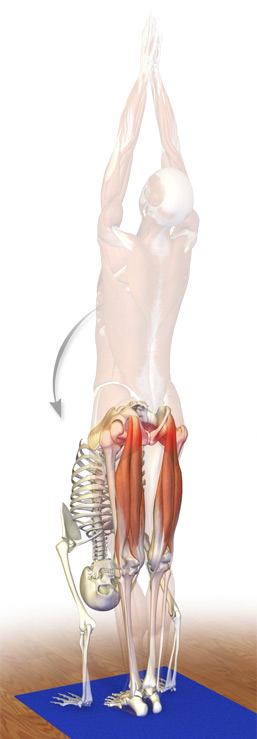
Myofascial Considerations
The previous list of structures focused on restrictions primarily in muscles, and their tendons. Another key area we must consider in any hamstring injury is fascia. Fascia is everywhere, weaving through, and interconnecting every component of our body.
Muscle fibers originate from, and insert into, fascial fibers. These fascial fibers, in turn, insert into multiple regions of the bone, and even into adjacent muscles. These additional points of contact and control provide the muscle with the ability to generate force in multiple directions.
Only certain sections of the muscle contract when performing an action. Force is not generated from just the origin and insertion points, but also through the numerous fascial connections.
Muscles work together as functional units that coordinate their actions across multiple joints. Depending on the degree of motion required, and amount of force that is needed, each muscle will contract only specific areas of the muscle, rather than the entire muscle. These very specific motions are largely coordinated by the neurological receptors embedded in the fascia, and not by the brain.
Fascia is full of two types of neurological receptors - mechanoreceptors and proprioceptors. A mechanoreceptor is a sensory receptor that responds to mechanical pressure or distortion. A proprioceptor is a sensor that provides the brain with information about joint angle, muscle length, and tension.
Motion is coordinated by the feedback of the neurological receptors in the fascia when tension is transferred from one area to the next. (Previously these receptors were only thought to be located within just the muscles).
Fascial Lines and a Hamstring Injury
When we evaluate a hamstring injury, we must also take into consideration all the fascial connections to the structures that are involved in performing and coordinating motion. It is important to look at the big picture, and take into consideration that multiple muscles, working across multiple joints (all of which are interconnected by fascia) are all required to coordinate these motions.
In the case of a hamstring injury, the fascial connections we should consider are in the Superficial Back Line (see Anatomy Trains by Thomas Meyers). The following is a short synopsis of the posterior line. I have also included a link to the Anatomy Trains dissection video about the posterior line – Thomas Meyers Superficial Back Line Video.
Superficial Back Line
- Beginning at the bottom of the foot with the plantar fascia. This fascia passes over the heel bone (calcaneus) and inserts into the Achilles tendon.
- The Achilles tendon is formed by the calf muscles (Gastrocnemius and Soleus). There are direct fascial connections into the hamstrings.
- There are fascial connections directly into the sacrotuberous ligament, which runs into the sacral fascia.
- Connections from the sacral fascia run directly into the back muscles (erector spinae) from the low back (lumbar spine) up through the mid back (thoracic spine) into the neck (splenius and semispinalis capitus).
- Fascial connections then continue up the neck to the fascia on the skull (nucal line). This continues along the scalp fascia to the forehead just above the eyes.
Once you see these videos, you will find it very hard to dispute the importance of these fascial connections.
Bottom Line: You can try treating a hamstring injury with all the right techniques (ART, Graston, Massage etc.) and find that you still have not resolved a chronic problem you need to consider, and treat, the fascial interconnections
In part five of Resolving Hamstring Injuries we will cover Functional Hamstring Exercises.
If you would like more information or to purchase our books please go to www.releaseyourbody.com .
If you would like information about our clinic in Calgary Alberta please go to www.kinetichealth.ca.
(COPYRIGHT KINETIC HEALTH 2012 – ALL RIGHTS RESERVED)
No comments:
Post a Comment